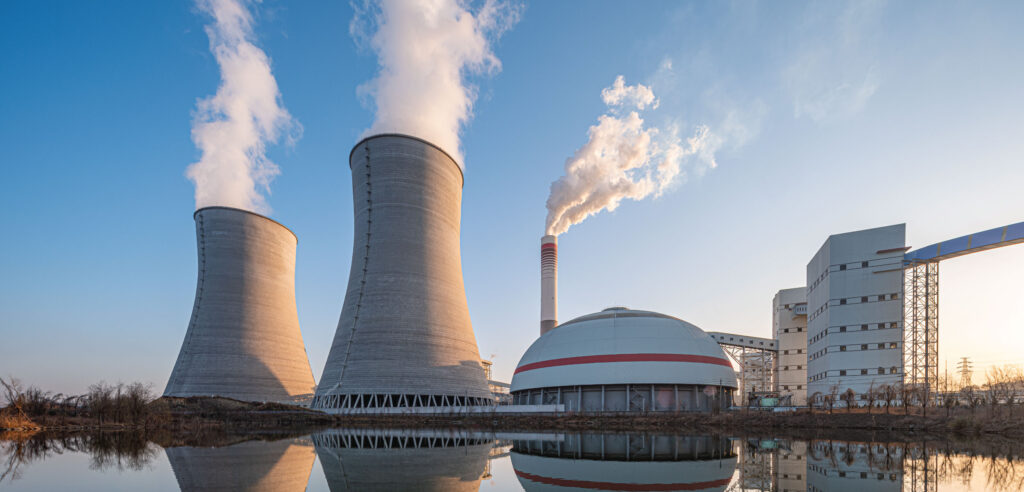
As South America continues in the energy transition towards a clean and low-carbon future, nuclear energy emerges as a key factor of the shift. The region has an abundance of renewable energy sources, including solar, wind, and hydropower energy. However, this energy is intermittent as it depends on weather conditions for electricity generation. Further, nuclear power plants use vibration dampers to mitigate the effects of mechanical vibrations in various parts of the plant.
Adoption of nuclear energy addresses the challenges related to these sources. It enhances reliability, grid stability, and long-term energy security. For instance, countries like Argentina and Brazil are incorporating nuclear energy into their energy mix to complement their renewable energy strategies. Let’s uncover the impacts and challenges facing nuclear power plants and how vibration dampers may provide solutions.
Challenges facing nuclear power plants and vibration dampers as solutions
Nuclear power plants face several challenges that may limit their productivity, safety, and efficiency in South America. Due to the region’s geographical location, the nuclear power plants may face several challenges. This includes seismic activities and other natural disasters. Other challenges include equipment wear, safety risks, and aging infrastructure. Using vibrational dampers can help improve operational stability and reliability. This may help extend the lifespan of the equipment, reduce maintenance costs, and ensure stable power generation and supply. Including nuclear energy in the energy mix, South America may be able to ensure a reliable energy supply. The following are the challenges facing nuclear power plants and common ways vibration dampers offer solutions.

- Equipment wear and tear – nuclear power plants operate with heavy machinery under extreme conditions. This may include high pressure, temperature, and flow rates. It may result in mechanical vibrations, which can worsen wear and tear on turbines, generators, piping systems, and safety mechanisms. Vibration dampers help mitigate the harmful effects of mechanical vibrations by reducing stress on moving parts.
- Grid stability – grid instability is a challenge due to the integration of intermittent renewable sources like solar and wind. Nuclear plants need to operate reliably to balance such fluctuations. Vibration dampers help maintain the operational reliability of turbines, generators, and transformers. This helps to ensure a steady supply of electricity.
- Safety risks and plant shutdowns – vibrations can damage sensitive equipment in safety areas like cooling systems and control systems. This can cause shutdowns and threaten safety and energy reliability. Dampers help to ensure the continuous and safe operation of these systems.
- Aging infrastructure – many of South American nuclear power plants are aging and face challenges related to outdated equipment. These plants may experience mechanical failures due to vibration increases. Installation of modern vibration dampers can help extend the life of aging equipment.
Environmental impacts of nuclear energy in South America
Nuclear energy provides various environmental benefits, such as low greenhouse gas emissions and reduced air pollution. This makes it a valuable component of South America’s clean energy transition. However, it also provides some negative impacts that may limit its adoption and development. For instance, the construction of nuclear plants in South America could lead to biodiversity loss, soil erosion, and disruption of wildlife. The region must balance the expansion of nuclear energy with the protection of its ecosystems and biodiversity. This is by ensuring proper safety measures and regulations are in place to reduce the negative impacts. Using vibration dampers helps to absorb and dissipate vibrations during earthquakes. The following are the environmental impacts of nuclear energy in South America.

- Low greenhouse gas emissions – nuclear energy generates electricity without carbon dioxide emissions. This helps South American countries meet their international climate commitments, such as the Paris Agreement.
- Reduced air pollution – nuclear energy helps reduce other forms of air pollution. These include sulfur dioxide, nitrogen oxides, and particular matter. This is beneficial in densely populated areas and regions with high reliance on coal or oil.
- Land use efficiency – nuclear plants allow for the preservation of natural ecosystems and landscapes. They can generate large amounts of electricity without needing huge tracts of land.
- Nuclear waste management – spent nuclear fuel and other radioactive materials remain hazardous. It requires careful handling, storage, and disposal to avoid contamination of the environment.
- Water usage and thermal pollution – discharging cooling water from the nuclear plant in high temperatures back to lakes can lead to thermal pollution. This can reduce oxygen levels, which harms the local aquatic ecosystems.